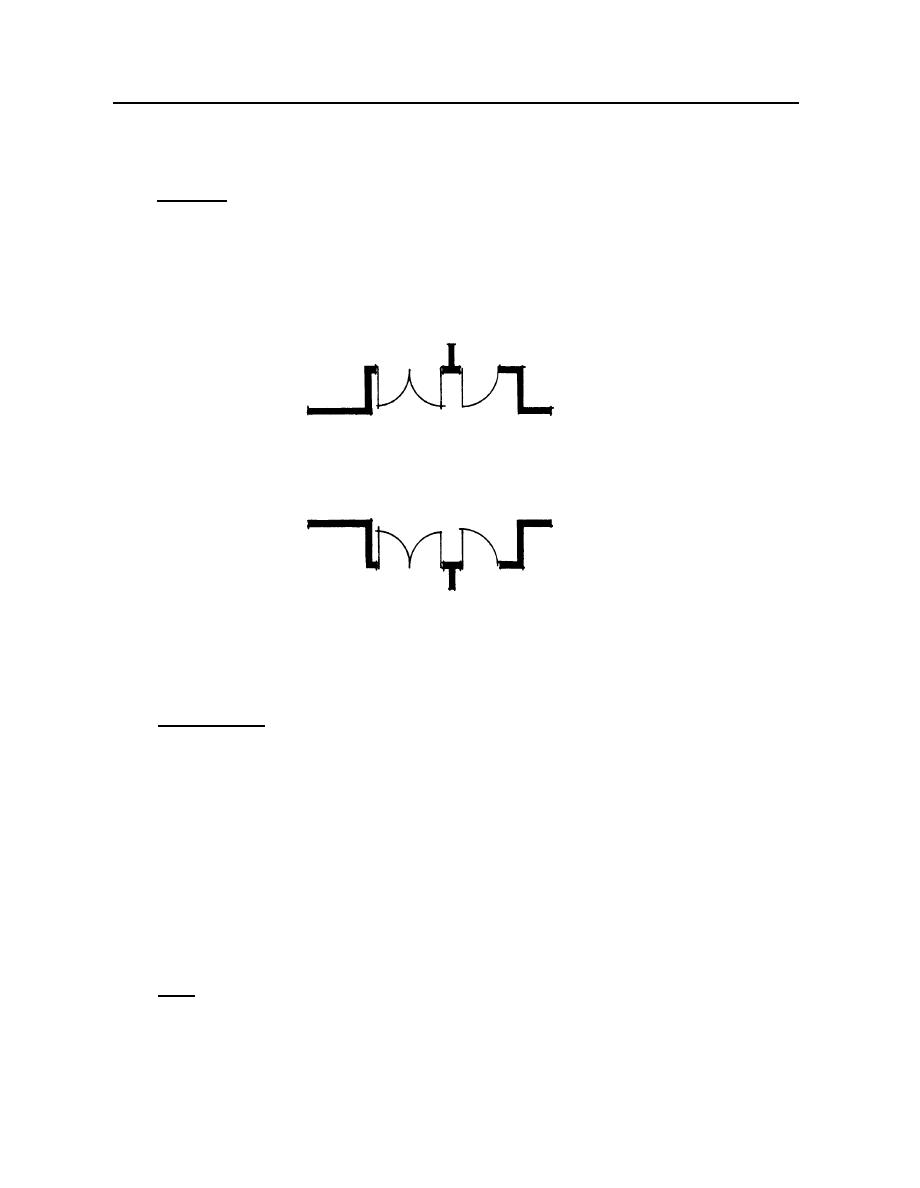
GENERAL DESIGN CONSIDERATIONS
DG 1110-3-112 May 1979
--
3-4 BUILDING DESIGN (cont'd)
the direction of exit as shown in Figure 3-9. This eliminates doors which may open into and impede
traffic flows, however, sufficient clearances must be provided so that persons in wheelchairs can reach
and pull the door open. Frequently used doors to habitable spaces (including toilet rooms) should have
wire or tempered glass vision panels to allow users to see persons approaching the door from the
opposite direction.
Corridor
Figure 3-9 Recessed Room Exit
(3) Finish Materials. Interior finishes must be appropriate for the design function of the building and
spaces. Selection of materials should be based on low maintenance qualities considering the
anticipated use, life cost impact, fire and other safety requirements. Floor coverings should be easily
maintained, durable and non-allergenic. They should contribute to sound control and provide a
comfortable work surface. Unless otherwise specified, wall-to-wall carpeting should be provided in
most areas except corridors, shops, toilets, storage areas, laboratories and vending areas. The color,
texture and pattern of materials should complement the overall building design. Native (local)
materials should be used to the greatest extent practicable. Long-life materials such as stones, tiles,
woods, plastics and vinyls should be selected to provide attractive colors, textures and patterns that
will not quickly become outdated. Painted surfaces and patterns are relatively easy and inexpensive to
refurbish and can be kept fresh and up-to-date in appearance. Interior finishes must conform to the
flame spread and smoke development standards contained in DoD Manual 4270.1-M and NFPA 101.
(4) Color. Use of color in Army facilities is limited to a practical number selected from Federal
Standard 595A, Colors. General guidance for color selection is provided in TM 5-807-7, Colors for
Buildings. Color should be used to stimulate human physical and emotional reactions and to enhance
3-20



 Previous Page
Previous Page
